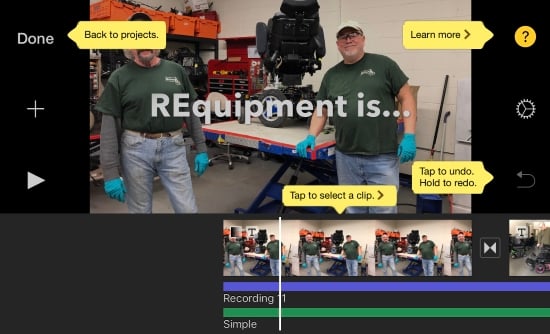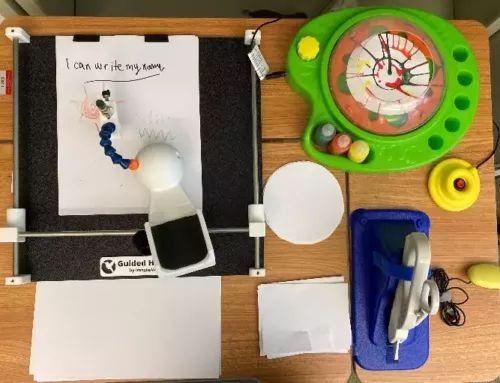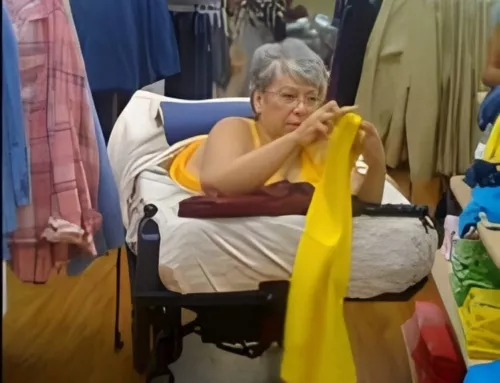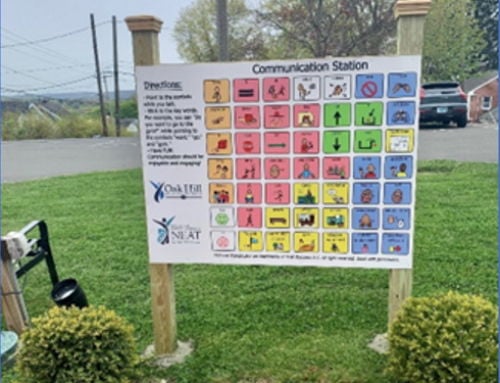Seeking the Right Straws–Disability and Environmental Advocates Join Forces

Thanks to Kyla Aquino Irving and Allie Cannington of the California Foundation for Independent Living Centers (CFILC) for reporting on this unique and timely collaboration.
Many of us take drinking fountains for granted. What if suddenly you needed special equipment to make them work?
Straw bans are intended to slow the rate of plastic pollution, particularly in our oceans, and at first glance, they seem beneficial for everyone. Yet bans can also threaten the independence of people with disabilities who rely on straws as readily-available assistive technology (AT).
“Straws enable me to access hydration with dignity. Would it be possible to hydrate without them? Only if I had assistance. Do I feel the same level of dignity in a public setting without them? Absolutely not.”– Russell Rawlings, Director of Advocacy Services at the Resources for Independent Living Sacramento
Across the United States, cities and counties are passing laws restricting straws and other single-use plastic materials. Last summer, as the media covered the public reaction to straw bans from environmental and disability rights perspectives, advocates on both sides of the issue came together in Monterey, California to find common ground.
The Monterey County Independent Living Center, Central Coast Center for Independent Living (CCCIL), and the Disability Organizing Network met with the Monterey Bay Aquarium to talk about straws and a ban’s potential impact on individuals with disabilities. The conversation explored ways to protect the environment while preserving access.
“Having access to straws (historically plastic straws) allows people with disabilities to access independence, community integration, and public life.” –Allie Cannington, Statewide Community Organizer at CFILC
In California, a Straws on Request law would go into effect January 1st, 2019. The law requires full-service restaurants in California to provide straws only when customers ask for them. One well-meaning effect of the environmental awareness raised by the law is that more restaurants, cafes, and eateries were also switching to non-plastic straws.
We wondered, what alternative straws might work for individuals who rely on plastic straws as AT?
To find out, a user-experience study with alternative straws was planned. The goal was a resource that could advise policymakers and communities and help ensure future solutions are inclusive as well as sustainable.
Alternative Straws: One Type Does Not Fit All
California’s Disability Organizing Network (DOnetwork) conducted the study with support from the Monterey Bay Aquarium, its culinary partner, Service System Associates, and the Central Coast Center for Independent Living.
Individuals from the cross-disability community tested seven straw types of varying lengths, materials, and flexibility. 71 participants recruited from independent living centers throughout California completed the research.
Participants received kits with straws made of compostable paper, compostable plastic, BPA-free plastic, silicone, and steel. The survey was designed to determine which were most accessible and effective for routine use with a combination of cold, warm, hot, thick and thin beverages.

Russell Rawlings tests a reusable stainless steel straw with a silicone tip as part of the Disability Organizing Network’s study
Our Key Findings:
- People with disabilities who need straws to access food and/or beverages have nuanced and diverse needs.
- Compostable paper straws do not work for most people with disabilities.
- People with disabilities seek straws that are flexible, lightweight, durable enough for reuse, and suitable for drinks of different temperatures.
- Among the options that were tested, bendable, compostable plastic straws and BPA-free bendable straws are the best alternative straw designs that do work for people with disabilities. Both types need to be at least 8.25 inches long.
- People with disabilities want to find ways to reduce waste and protect the environment and are the experts on their own individual needs and experiences.
The study concludes that California’s new straw regulations and any future ordinances must be crafted to both reduce plastic waste and ensure access for the Disability community.
Exploring Solutions Together
In California, the new state law and other changes ahead present an opportunity to build and deepen relationships between environmentalists, restaurants, public officials and California’s Disability community.
As Barbara Meister, Public Affairs Director for the Monterey Bay Aquarium observes, “This report, and its findings, illustrate that all of us have a role to play in ocean conservation, and in ensuring access for all people. Through open dialogue and collaboration, we can advance both goals together.”
Allie Cannington, Statewide Community Organizer at CFILC, agrees. “Californians do not have to choose between providing access to people with disabilities and reducing harm to the environment.”
How Restaurants Can Lead the Way
As restaurants implement the new Straws On Request law, education about straw access is crucial—for restaurant owners and staff, as well as for the Disability community. Restaurants must actively ensure that effective straws are available upon request and, ideally, make the option known to customers.
Jessie Nguyen, the owner of San Francisco’s Little Window, is excited to be one of the first restaurants to partner with the DOnetwork. “Restaurants are public spaces, and we pride ourselves in playing an active role in the local community,” she says. “This is a make-it or break-it situation: we want to welcome all people, including people with apparent and non-apparent disabilities.”
As a customer who relies on straws, Jamie Caron suggests that restaurant owners and workers always ask if a customer needs one. “Do not assume people’s abilities,” Jamie says. “Just be polite and ask! For example, it’s like asking if you want water right when you are seated by your host or hostess in the restaurant.”
Since the report’s release, CFILC and Ability Tools (the State AT Program for California) have distributed findings as part of our Accessible Earth Day Toolkit. This year marks CFILC’s inaugural Accessible Earth Month, designed to promote environmentalism in lockstep with accessibility.
Are you a person with disabilities or an ally who wants to get more involved? Are you a restaurant owner or worker who wants to provide better access to the Disability community? Are you an environmental advocate who wants to collaborate with the Disability community?
Visit the Disability Organizing Network, or email Allie Cannington, DOnetwork’s Statewide Community Organizer, at allie@cfilc.org.
Download the complete Straw report (English, Spanish)
Monthly Blog Digest
Search the blog
State AT Program Blogs
California
Florida
Indiana
Kentucky
Louisiana
Maryland
Massachusetts
Michigan
Montana
North Carolina
North Dakota
Utah
State AT Program Blogs
The AT3 Center, the Association of AT Act Programs (ATAP), and the Administration on Community Living (ACL) make no endorsement, representation, or warranty expressed or implied for any product, device, or information set forth in this blog. The AT3 Center, ATAP, and ACL have not examined, reviewed, or tested any product or device hereto referred.








